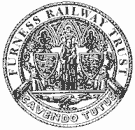
Our new website is now LIVE!
Please keep up to date with our news on Facebook and Instagram
or click below to
You can contact us via;
Chairman, Tim Owen - Tel; 01539 558701
Membership, Michael Rigg, email; membership@furnessrailwaytrust.org.uk
Chairman, Tim Owen - Tel; 01539 558701
Membership, Michael Rigg, email; membership@furnessrailwaytrust.org.uk